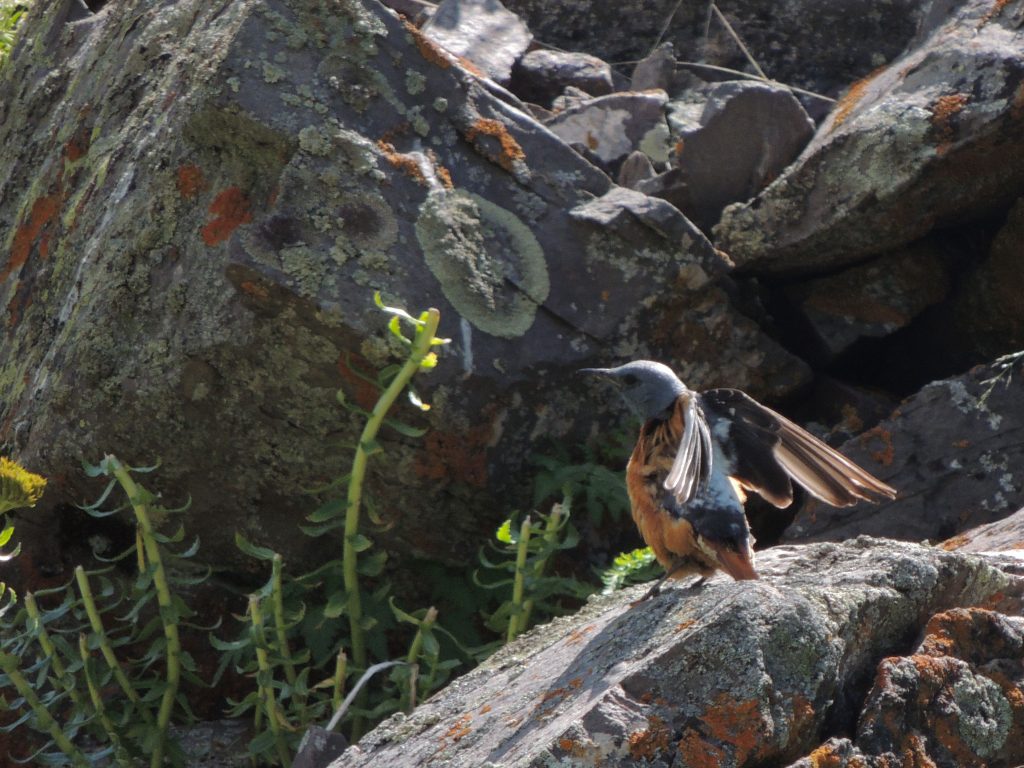July 17 2018. Tien Shan Mountains, Kyrgyzstan. The focus of our Snow Leopard quest was to find irrefutable evidence of the cats’ presence. But one or twice when I commented on finding something I thought interesting but doubted anyone else would, irrelevant maybe, I was surprised. These tidbits provoked a sometimes-excited response from Dr. Volodya Tytar, our expedition scientist, who viewed them as possible indicators of changes in land use or climate, and therefore germane to the question of whether Snow Leopards are resident. Science, he pointed out, involves the painstaking, sometimes very boring, assembly of countless bits of information. My odd little observations were every bit as important.
So, in the interest of the bigger picture, it was quite appropriate that one day a small group with known interests in birds was directed to follow a herder’s track up a narrow valley and see what birds we could find. It is possible they were humouring us, but so what.
A group of birders doesn’t move very fast in the field, faster than botanists certainly, but we took all morning to cover less than a kilometre of rough ground and cattle pasture; we were having too much fun. In that morning we were slowed to a crawl by many intriguing birds, specifically including: Cinereous Vulture, Common Rosefinches, Common Cuckoo, Rock Thrush, and Hobby. I might also add Isabelline and Northern Wheatears as well as Citrine and White Wagtails, but they were to be expected anyway.
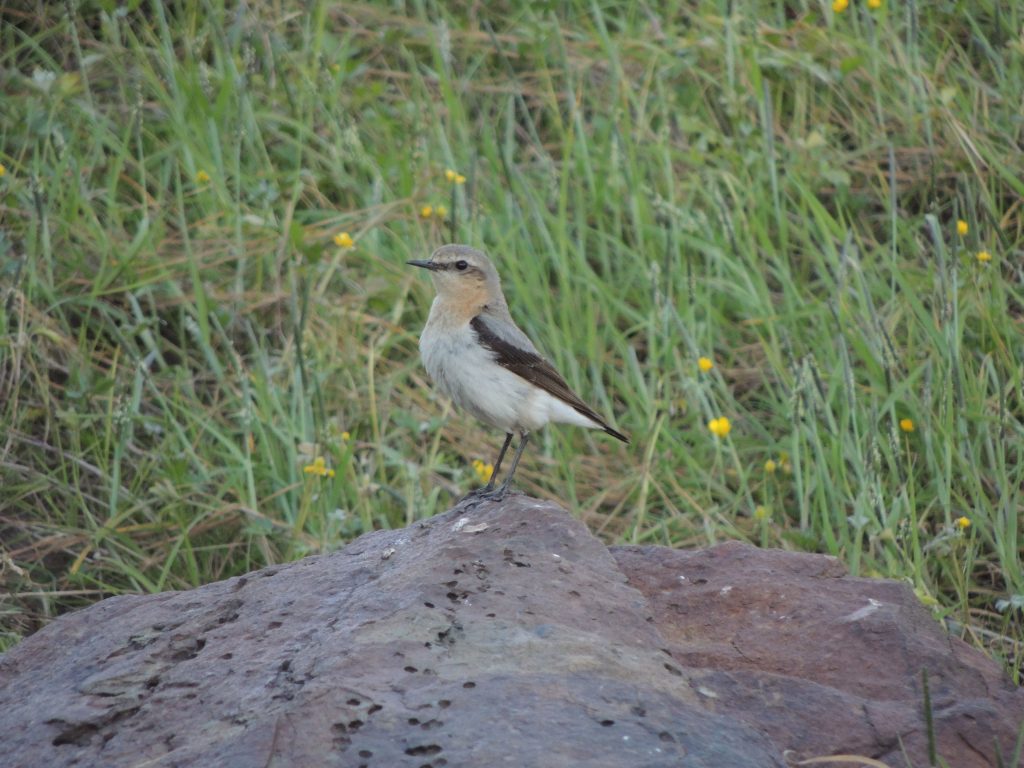
The vulture was almost our first bird and it was one of those experiences where I had to pinch myself . (I did that a lot). The setting was a towering green mountainside, a clear blue sky and this huge, solitary bird like a floating plank cruising the skyline. Much debate and field guide consultation (Birds of Central Asia) followed and we all became convinced that it was a Cinereous Vulture. Wow enough to be Bird of the Day; although perhaps too early in the day.
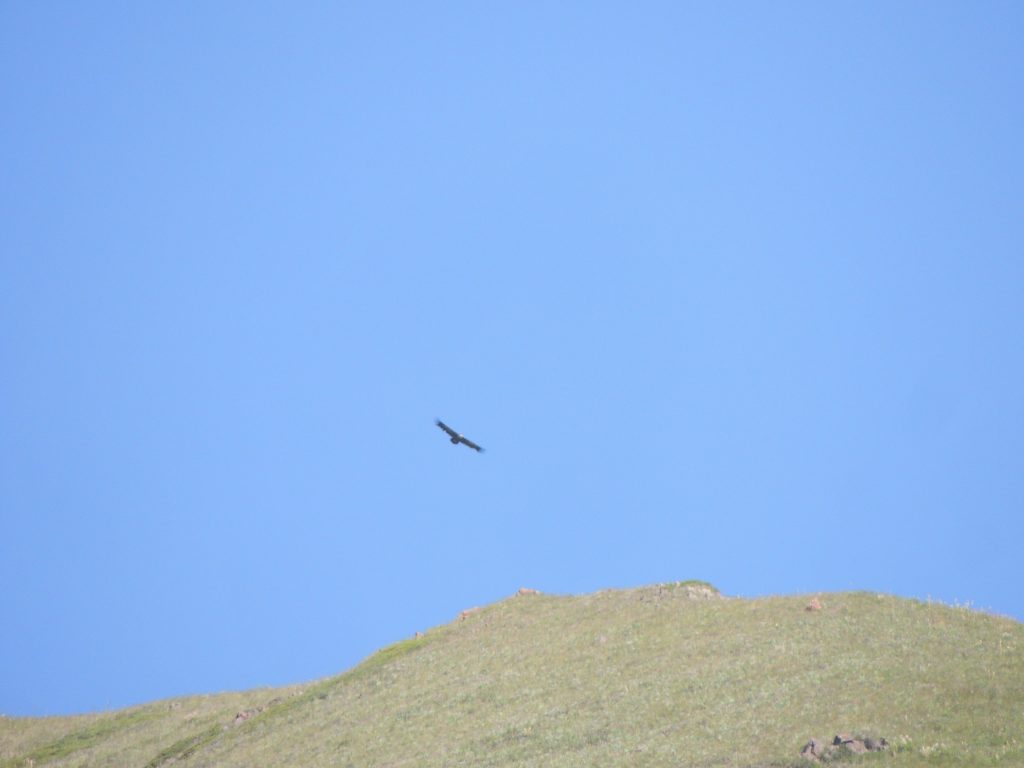
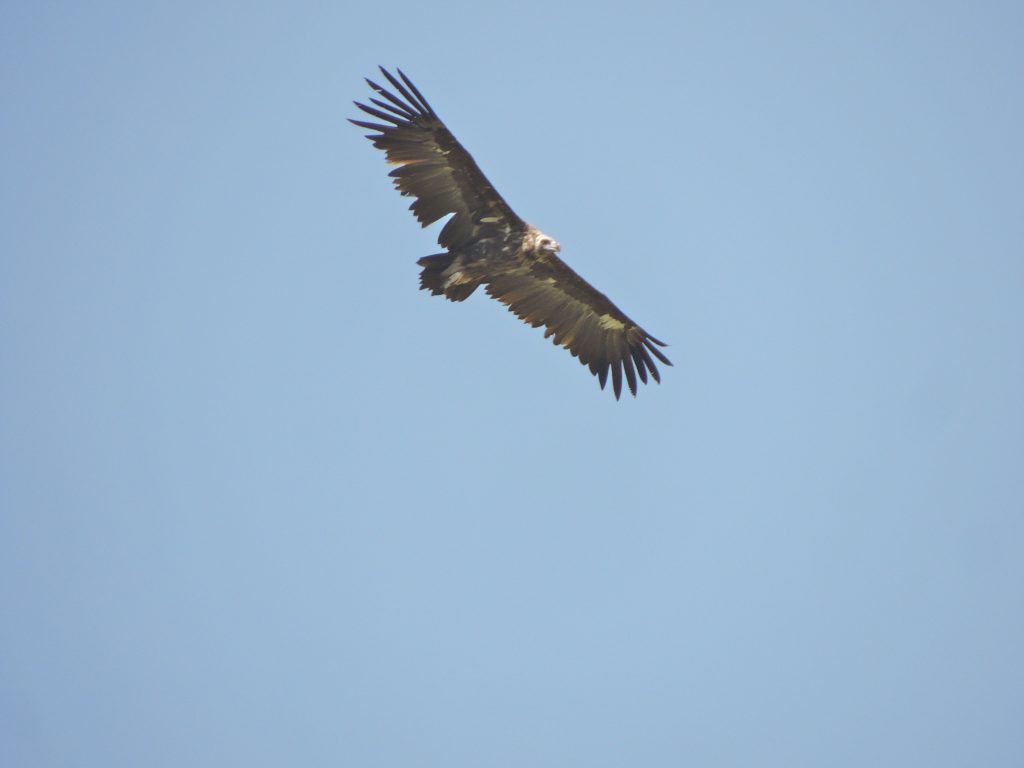
Stepping carefully around cow pats we puzzled a bit at juvenile Citrine Wagtails, (problem solved when the parents showed up to feed them) We inspected Common Rosefinches at length questioning whether they were really Commons or could they possibly be Red-mantled, or Spotted Great, or Red-fronted Rosefinches. (But no, just Commons.)
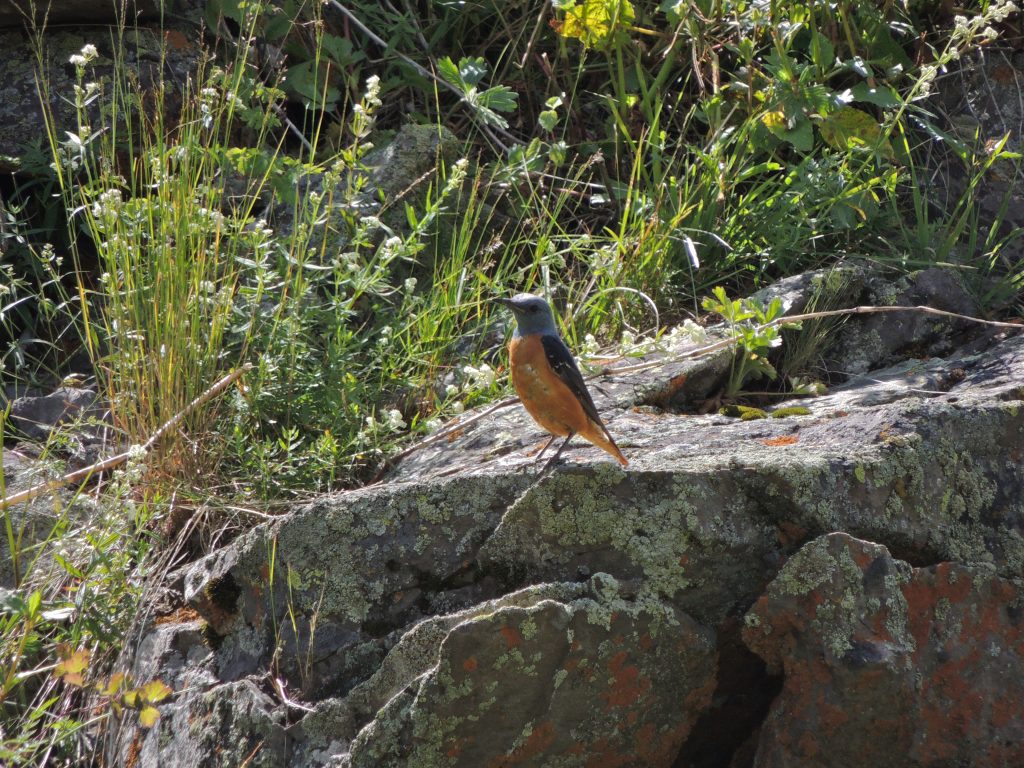
Bird of the Day was a Rock Thrush, a fairly common bird as it turns out. I had been distracted by a Common Cuckoo which had persuaded us for a while that it was an accipiter; but then which one? Then my companions drew my attention to the Rock Thrush that had just popped into view on a small exposed rock cascade. It caused us a lot of head scratching; we were all beginners in this game. The bird was quite passive and only ever moved in order to allow us a better view. We made several uninspired guesses until the field guide made it abundantly clear. What a stunningly beautiful bird! And by a narrow margin my Bird of the Day.
